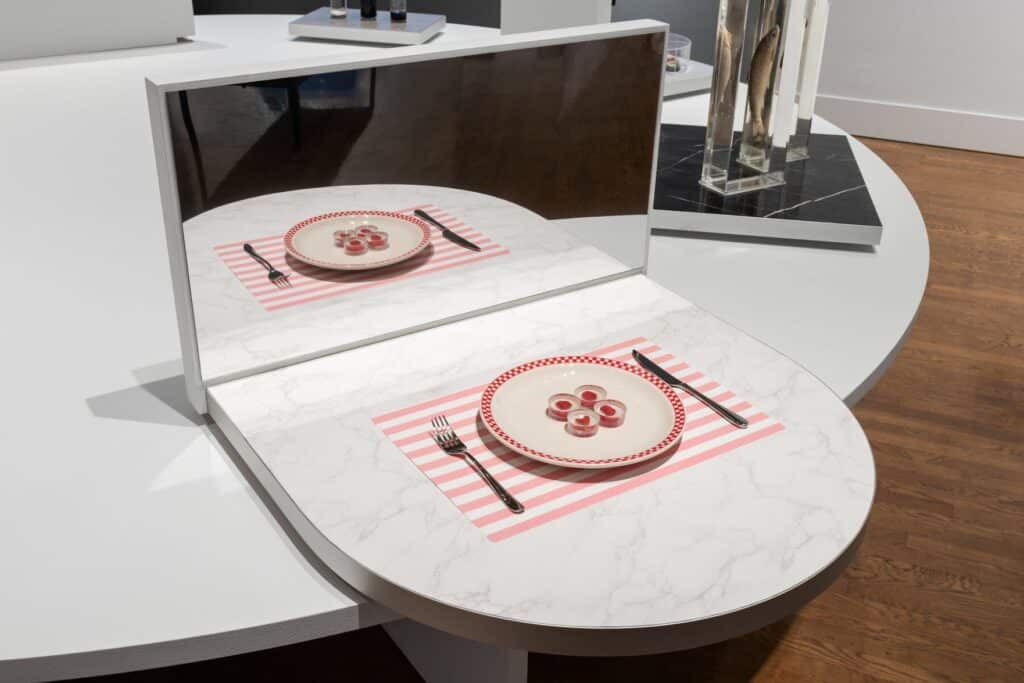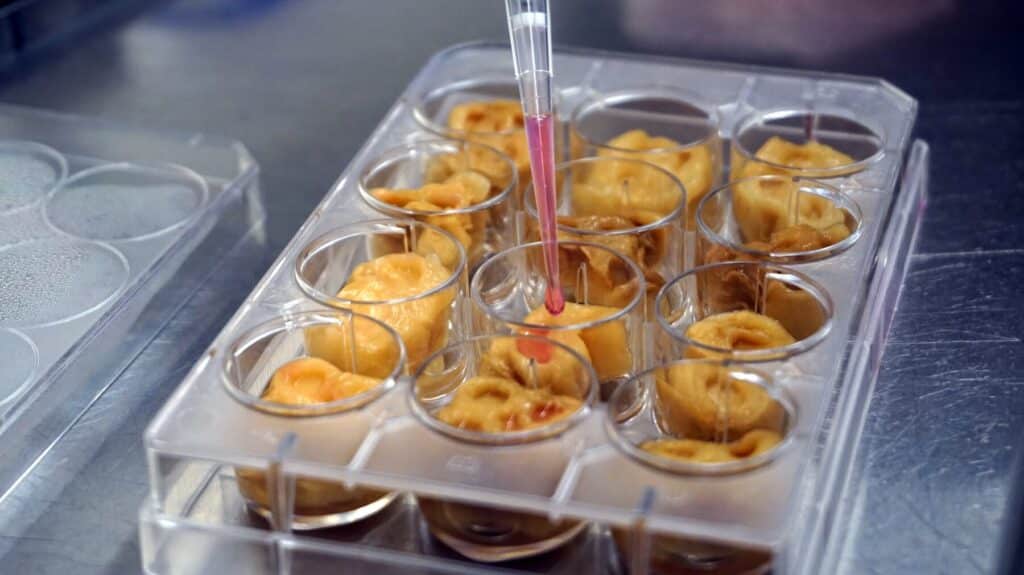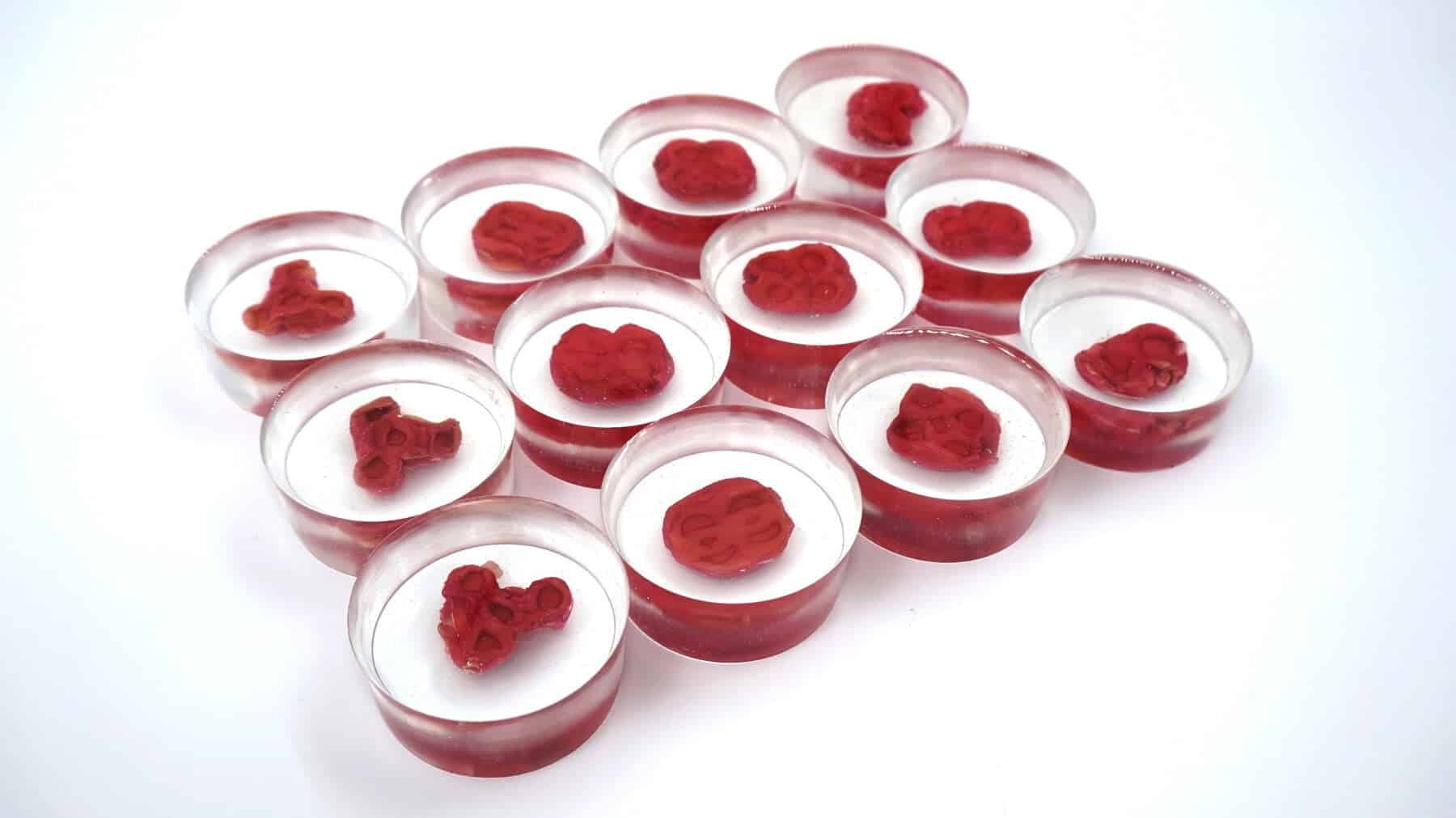An art project that offers an absurd vision of the lab-grown meat industry sparks strong debate and reactions in London.
The installation of meat steaks grown from human cells at the Design Museum in London was intended to criticize the meat industry's growing use of living animal cells. It ended up sparking a broad debate about bioethics and the pitfalls of art criticism.
The “cannibal” dystopia
Orkan Telhan, an artist and associate professor of fine arts at the University of Pennsylvania's Stuart Weitzman School of Design, has spent the last year imagining how climate change might impact the future of food consumption.
Telhan collaborated with scientists to create a project that included 3-D printed pancakes, bioengineered bread and genetically modified salmon.
But there has also been a provocative and less savory development. They called it "Ouroboros steak“, meat grown from human cells and blood. A project created to question the sustainability practices of the nascent cellular agriculture industry, which develops lab-grown meat from existing cells in cultures.
Ouroboros Steak
Since the Steak of Ouroboros ended up at London's Design Museum in October, reactions have increased exponentially. The artist received dozens of threatening emails and social media posts calling him “evil” and a “devil.” Some specifically called for the artwork to be destroyed.
According to Telhan, “Attention quickly focused on allegations of promoting cannibalism. It was a misinterpretation and politicized in all the wrong ways, because the idea of humans somehow eating human flesh is a taboo subject.”
How is an Ouroboros Steak born?
The installation takes its name from the ancient symbol of a snake eating its own tail, for obvious reasons.
“Ouroboros Steak” examines, but does not promote, self-cannibalism as a satirical take on the growing demand for meat products around the world, which may be contributing to the reduction of biodiversity.
An absurd solution to raise a serious problem
The designers hoped that shocking the public would trigger a reflection on environmental responsibility.
“Our project provides an absurd solution to raise a serious problem,” he said Andrew Pelling, a biophysicist who collaborated with Telhan and industrial designer Grace Knight to create the steaks. “But in our scenario, at least you give consent by taking your cells. In the world of lab-grown meat, you take cells from animals without their consent.”
As controversial as the project is, last year the morsels of “human” meat visited museums across the United States without any problems, even when brazenly displayed on a plate complete with cutlery.
Cultivated meat, torment and ecstasy
“I called it a sleeper hit,” he says Michelle Millar Fisher, the curator who commissioned the steaks for the “Designs for Different Futures” exhibition. The tour began at the Philadelphia Museum of Art and continued in other US cities before arriving in Europe. “The provocation at the center of this project is truly right. It's important to ask where we get our protein."
However, the work will not move from the Design Museum until the end of the exhibition in March 2021.
“A controversial question is being asked that in an era of severely depleted resources urgently needs to be articulated,” the artist added. Is he right?

Meat grown from human cells: is there a risk that it will happen sooner or later?
Investment in cellular agriculture has increased at a remarkable rate in recent years, but serious discussions about the bioethics of lab-grown meat have taken a backseat.
Searches market estimates that the cultured meat business could reach $ 214 million by 2025, and more than double to $ 593 million by 2032. On December 2, Singapore became the first government to approve the consumption of chicken cells grown in bioreactors, allowing Eat Just to sell its bioengineered chicken nuggets.
“We need constructive criticism if we are introducing new technology,” he said Isha Datar, executive director of New Harvest, a nonprofit research institute focused on accelerating discoveries in cellular agriculture.

“This technology promises to create a more sustainable means of meat production, but how do we hold ourselves accountable to ensuring this happens?”
When criticism ends up on the plate
In recent decades, several artists have questioned the ethics of biotechnology by adopting methods and machinery from the field for their installations.
in 2002 Brazilian artist Eduardo Kac worked with a team of geneticists to splice the DNA of an albino rabbit with that of a luminescent jellyfish to draw attention to what transgenic cross-breeding of species characteristics might imply for the human genome.
in 2019, artist Jordan Eagles projected enlarged images of blood onto the gallery walls of the Andy Warhol Museum in Pittsburgh as a commentary on the stigma associated with LGBTQ blood donations and those living with HIV/AIDS.
There are also those who are interested
Despite the constant streams of hate messages flowing into Telhan's email, the artist and his collaborators say they have received a significant number of requests. Ordinary people seem interested in purchasing a kit to grow meat from their own cells (which is not for sale, however).
The Dr. Pelling said he has also received requests from several venture capitalists who would like to invest in the “Steak of Ouroboros.” For the time being, however, there are no plans to bring meat produced from human cells to the market.
“This project was provocative, perhaps too provocative,” he joked. “It's just one symptom of the enthusiasm for cultured meat.”


